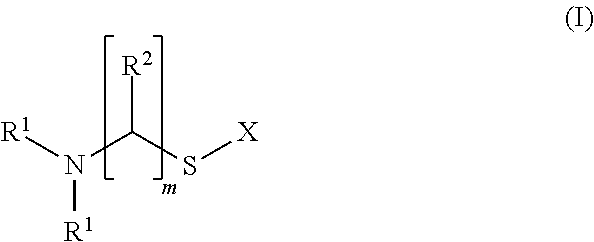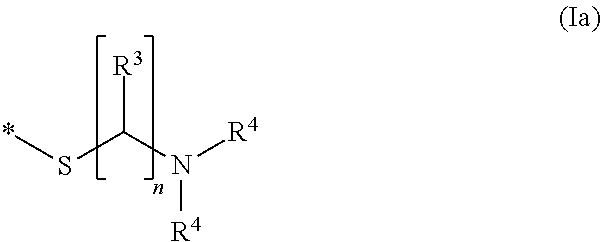Tin plating bath and a method for depositing tin or tin alloy onto a surface of a substrate
a technology substrate, which is applied in the direction of metallic material coating process, liquid/solution decomposition chemical coating, coating, etc., can solve the problems of limited thickness of tin or tin alloy deposit, inability to electrically contact individual contact areas, and widespread failure of attempts to replace them to date, etc., to achieve high plating rate, high plating rate, and high plating rate
- Summary
- Abstract
- Description
- Claims
- Application Information
AI Technical Summary
Benefits of technology
Problems solved by technology
Method used
Image
Examples
##ventive example 1
Inventive Example 1
2-Mercaptopyridine as Stabilizing Additive in an Electroless Tin Plating Bath
[0104]1) In a beaker 99.1 g / L potassium pyrophosphate were dissolved in deionized water. Then, 41.14 g / L tin(II)pyrophosphate were added. The resulting solution was stirred at 50° C. for 30 min to dissolve the tin(II)pyrophosphate followed by filtration and cooling to 25° C. The pH value of the solution was about 8.1.[0105]2) In a further beaker, 330.34 g / L (1 mol / L) potassium pyrophosphate and 39.17 g / L (0.4 mol / L) 85 wt.-% ortho-phosphoric acid were dissolved in deionized water prior to heating the solution to 85° C. Then, 28.42 g / L (0.1 mol / L) titanium(IV)iso-propoxide were added slowly resulting in a pH value of about 7.8-7.9. The solution was then subjected to elevated temperature until the white precipitate was completely dissolved and the iso-propanol was removed. The solution was filtered and placed in a regeneration cell where a constant cathodic current was applied to said solut...
##ventive example 2
Inventive Example 2
Cysteamine as Stabilizing Additive in an Electroless Tin Plating Bath
[0114]The method described for inventive example 1 was repeated but 2-mercaptopyridine was substituted for 1 mmol / L cysteamine. The results are summarized in Table I.
PUM
| Property | Measurement | Unit |
|---|---|---|
| concentration | aaaaa | aaaaa |
| concentration | aaaaa | aaaaa |
| concentration | aaaaa | aaaaa |
Abstract
Description
Claims
Application Information
 Login to View More
Login to View More - R&D
- Intellectual Property
- Life Sciences
- Materials
- Tech Scout
- Unparalleled Data Quality
- Higher Quality Content
- 60% Fewer Hallucinations
Browse by: Latest US Patents, China's latest patents, Technical Efficacy Thesaurus, Application Domain, Technology Topic, Popular Technical Reports.
© 2025 PatSnap. All rights reserved.Legal|Privacy policy|Modern Slavery Act Transparency Statement|Sitemap|About US| Contact US: help@patsnap.com



